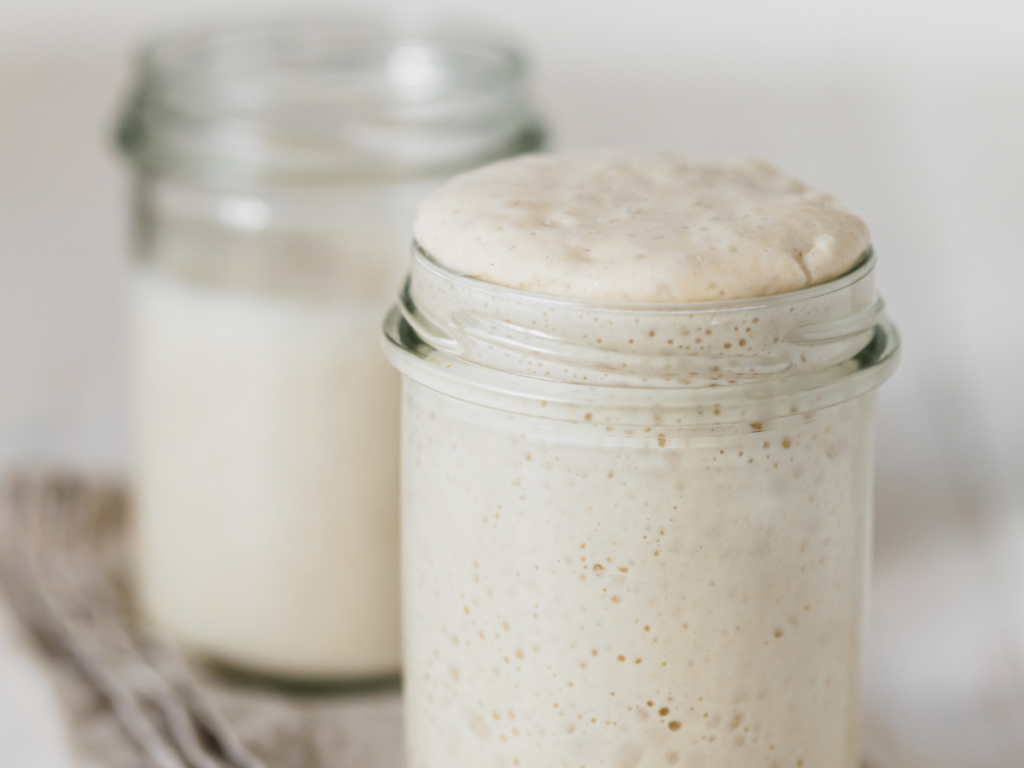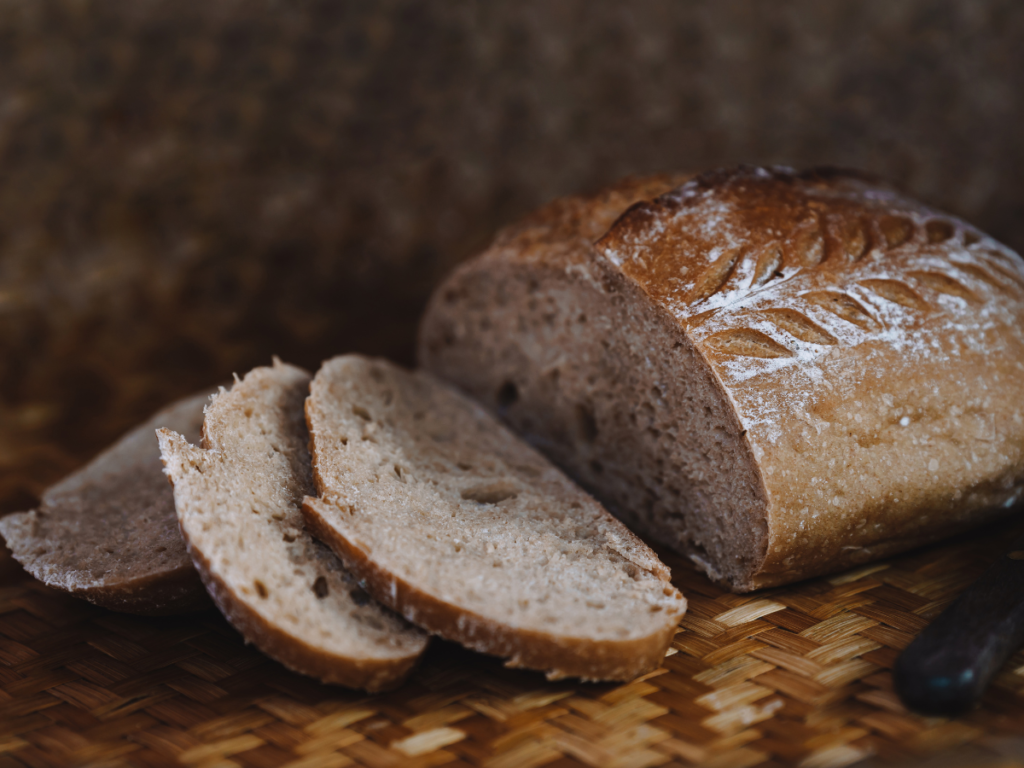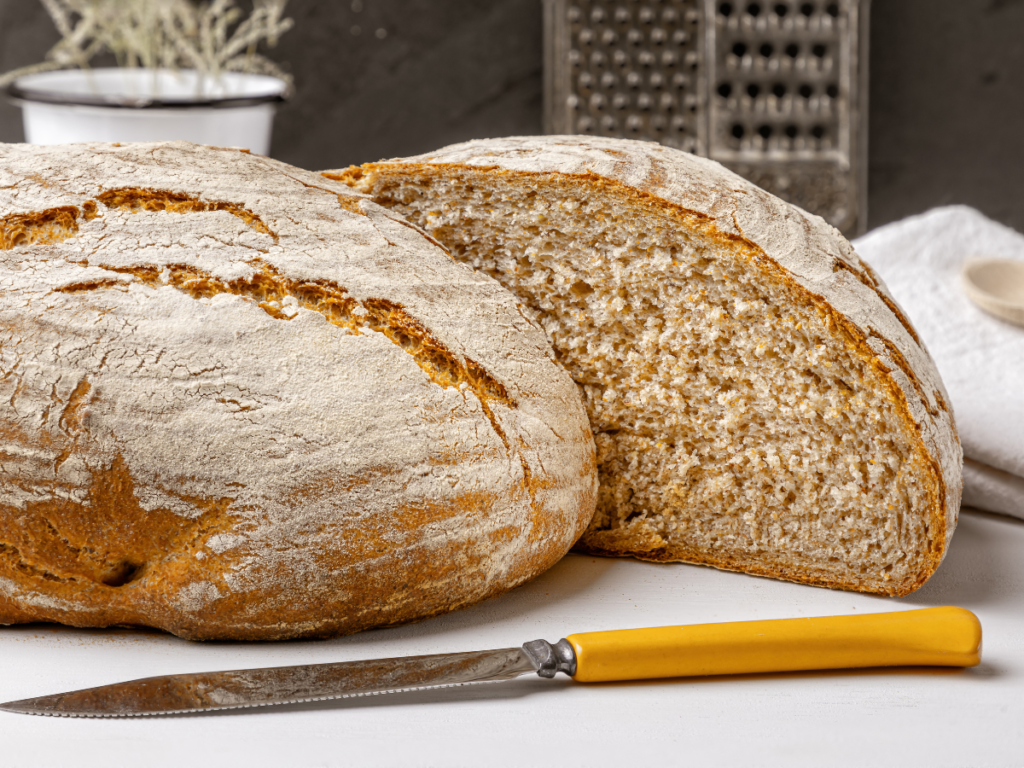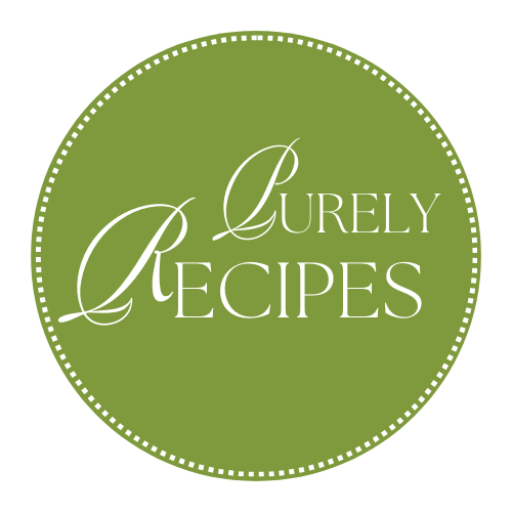
Have you ever wondered what gives sourdough bread its distinct tangy flavor and chewy texture? The secret lies in the sourdough starter. But is it truly necessary for baking delicious bread at home? Let’s dive deep into the world of sourdough starters, exploring what they are, how they work, and why you might want to use one in your baking.
What is a Sourdough Starter?
A sourdough starter is a lively blend of flour and water that traps wild yeast and beneficial bacteria from its surroundings. This concoction ferments over time, creating a natural leavening agent used in sourdough bread and other baked goods. The origins of sourdough starters date back thousands of years, making it one of the oldest forms of bread-making.
The starter is essentially a living culture. Flour contains natural sugars, and when mixed with water, it creates an environment where wild yeast and lactic acid bacteria can thrive. Over a period of days, the mixture becomes bubbly and fragrant, signaling that it’s ready to be used in baking.
The History and Origins of Sourdough Starter
The use of sourdough starter dates back to ancient Egypt around 1500 BC, making it one of the oldest known methods of bread leavening. The process spread throughout Europe and became particularly popular in France, where it was used to make the famous Pain de Campagne, a traditional country bread. During the California Gold Rush in the mid-1800s, sourdough became a staple for miners and settlers, earning it the nickname “prospector’s yeast.”
How Does a Sourdough Starter Work?
The magic of a sourdough starter lies in fermentation. As the mixture of flour and water sits out, it traps wild yeast and lactic acid bacteria from the air. The yeast ferments the carbohydrates in the flour, producing carbon dioxide gas that makes the dough rise. Meanwhile, the bacteria produce lactic acid, giving sourdough its characteristic tangy flavor.
This natural fermentation process is what sets sourdough apart from other types of bread. Commercial yeasts are designed to act quickly, leavening bread in a matter of hours. In contrast, the wild yeasts in a sourdough starter work more slowly, allowing for a longer fermentation period. This extended fermentation not only enhances the flavor but also improves the nutritional profile of the bread.
The Science Behind Fermentation
Fermentation is a biological process that transforms sugar into acids, gases, or alcohol. In the case of sourdough starter, the yeast ferments the sugars in the flour to produce carbon dioxide and alcohol, while the lactic acid bacteria produce lactic acid. This lactic acid not only gives sourdough bread its distinctive tang but also helps to break down phytic acid, which can inhibit the absorption of certain minerals in the body.
Why Use a Sourdough Starter?

Using a sourdough starter offers several benefits that make it worth the effort:
- Flavor: The fermentation process develops complex flavors that you can’t get from commercial yeast. The lactic acid produced by the bacteria adds a delightful tanginess to the bread.
- Health: Sourdough bread is easier to digest and has a lower glycemic index than regular bread. The fermentation process also breaks down some of the gluten, making it more tolerable for people with mild gluten sensitivities.
- Natural Preservative: The acidity in sourdough bread acts as a natural preservative, helping it stay fresh longer without the need for added chemicals.
- Nutritional Benefits: The long fermentation process increases the bioavailability of nutrients such as B vitamins, magnesium, and zinc, making them easier for the body to absorb.
Is Sourdough Starter Necessary for Baking Bread?
While a sourdough starter is essential for authentic sourdough bread, it’s not the only way to bake delicious bread. Here are some alternatives:
- Commercial Yeast: Quick and easy, but lacks the depth of flavor and health benefits of sourdough. Commercial yeast is designed to act fast, producing bread in a few hours. However, it doesn’t provide the same complex flavors and nutritional benefits as a sourdough starter.
- Poolish or Biga: These pre-ferments can mimic some of the characteristics of sourdough but are made with commercial yeast. They involve mixing a portion of the flour and water with a small amount of yeast and allowing it to ferment for several hours before adding it to the main dough.
When comparing results, bread made with a sourdough starter typically has a more complex flavor and better texture. The slow fermentation process allows for the development of more nuanced flavors and a more robust, chewy crumb.
Different Types of Bread That Require Sourdough Starter

- Traditional Sourdough Bread: The classic loaf with a chewy crust and tangy crumb. This is what most people think of when they hear “sourdough.”
- Other Baked Goods: Sourdough starter can also be used in pancakes, waffles, pizza dough, and more, adding a unique flavor twist. Sourdough pancakes and waffles have a slight tang and a fluffy texture, while sourdough pizza dough results in a crispy yet chewy crust.
- Sourdough Bagels: These have a denser, chewier texture compared to regular bagels, with a subtle tang from the sourdough.
- Sourdough Crackers: These are great for using up discard starter and have a delightful crunch and flavor.
How to Make a Sourdough Starter from Scratch
Creating your own sourdough starter is simple but requires patience. Here’s a basic guide:
- Day 1: Mix 1 cup of whole wheat flour with 1 cup of water in a glass jar. Cover loosely and let sit at room temperature.
- Day 2-7: Discard half of the mixture and feed with 1 cup of flour and 1 cup of water daily. After a week, your starter should be bubbly and ready to use.
It’s important to use non-chlorinated water, as chlorine can inhibit the growth of the natural yeast and bacteria. Whole wheat or rye flour is also recommended for starting, as it contains more nutrients and natural yeast than white flour.
Maintaining and Feeding Your Sourdough Starter
Once your sourdough starter is established, maintaining it is straightforward but requires consistency. Regular feeding ensures that the yeast and bacteria remain active and healthy.
- Daily Feeding (Room Temperature): If you keep your starter at room temperature, you’ll need to feed it daily. Remove half of the starter and replace it with equal parts flour and water. For example, if you have 1 cup of starter, discard 1/2 cup and add 1/2 cup of flour and 1/2 cup of water.
- Weekly Feeding (Refrigeration): If you bake less frequently, you can store your starter in the fridge and feed it once a week. Before baking, bring it to room temperature and feed it a few times to reactivate it fully.
Caring for Your Sourdough Starter
Maintaining a sourdough starter is like caring for a pet. It needs regular feeding and attention:
- Feeding: Feed your starter with equal parts flour and water every day or store it in the fridge and feed it weekly. If you bake frequently, keeping your starter at room temperature and feeding it daily will ensure
it’s always ready to use. If you bake less often, you can store it in the fridge and feed it once a week.
- Storage: Keep it in a glass jar with a loose-fitting lid to allow gases to escape. You can also cover it with a cloth or plastic wrap with holes poked in it. For long-term storage, you can even dry or freeze your starter.
Troubleshooting Common Issues
- Mold and Off Smells: If your starter develops mold or smells bad, discard it and start over. A healthy starter should have a pleasant, slightly tangy smell. If it smells rotten or like alcohol, it might need more frequent feedings.
- Poor Rise: If your bread isn’t rising well, your starter might need more frequent feedings or a warmer environment. A sluggish starter can often be revived by feeding it more frequently or keeping it in a warmer place.
- Hooch: Sometimes a layer of liquid, called hooch, will form on top of your starter. This is normal and can be stirred back in or poured off before feeding.
Can You Buy Sourdough Starter?

Yes, you can buy sourdough starter from various sources:
- Commercial Options: Many bakeries and online stores sell dried or fresh sourdough starter. Buying a starter can save you the time and effort of making your own, and it’s a good option if you want to ensure you’re starting with a reliable culture.
- Pros and Cons: Buying a starter saves time but may not have the same personal satisfaction as making your own. However, it can be a convenient way to get started with sourdough baking if you’re new to the process.
Sharing and Gifting Sourdough Starter
A sourdough starter is a gift that continues to give joy. Here’s how to share it:
- How to Share: Package a portion of your starter in a clean jar and include feeding instructions. Make sure to provide enough starter for the recipient to begin their own baking journey.
- Gifting Etiquette: Consider gifting to friends who enjoy baking and would appreciate the effort. It can be a fun and thoughtful gift, especially if you include a recipe or two to get them started.
Recipes Using Sourdough Starter
Here are a few delicious recipes to try with your sourdough starter:
- Simple Sourdough Bread: A basic recipe for a classic loaf. You’ll need flour, water, salt, and your sourdough starter. Mix the ingredients, let the dough rise, shape it, and bake it to perfection.
- Sourdough Pancakes: Light and fluffy with a tangy twist. Mix your starter with flour, milk, eggs, and a touch of sugar for a delicious breakfast treat.
- Sourdough Pizza Dough: Crispy and flavorful crust for your homemade pizzas. Use your starter to make a pizza dough that rivals your favorite pizzeria.
- Sourdough Bagels: Chewy and dense with a subtle tang. Boil them before baking for that classic bagel texture.
- Sourdough Crackers: Crunchy and perfect for using up discard starter. Mix your starter with flour, salt, and any herbs or spices you like.
Expanding Your Sourdough Baking
Once you’re comfortable with the basics, you can expand your sourdough baking repertoire:
- Experiment with Different Flours: Try using whole wheat, rye, spelt, or other specialty flours to create unique flavors and textures.
- Add-ins: Incorporate seeds, nuts, dried fruit, or cheese into your dough for added flavor and texture.
- Artisan Techniques: Learn to shape and score your loaves to create beautiful, bakery-worthy bread.
The Future of Sourdough Baking
Sourdough baking is more than a trend; it’s a community. The rise of home baking during the pandemic has led to new innovations and a renewed appreciation for traditional methods. Online communities and social media have made it easier than ever to share tips, recipes, and starters with other sourdough enthusiasts.
The future of sourdough baking looks bright, with more people discovering the joys of making their own bread at home. From experimenting with different flours to creating unique flavor combinations, the possibilities are endless.
Conclusion
So, is a sourdough starter necessary? While it’s not essential for all types of bread, it offers unique flavors and health benefits that make it worth the effort. Whether you decide to make your own or buy one, incorporating a sourdough starter into your baking routine can be a rewarding experience.
Baking with a sourdough starter is a journey, one that connects you with a tradition that spans thousands of years. It’s a way to slow down, appreciate the process, and create something truly special. So, give it a try and see how a simple mixture of flour and water can transform your baking.
FAQ’s
Do You Need a Starter for Sourdough?
Yes, you need a starter for sourdough. A sourdough starter is a culture of flour and water inhabited by naturally occurring wild yeasts and lactic acid bacteria. It’s what gives sourdough its characteristic flavor and texture. The starter acts as a leavening agent, causing the dough to rise without the need for commercial yeast.
What Can I Use if I Don’t Have a Sourdough Starter?
If you don’t have a sourdough starter, you can make one at home with just flour and water. It takes about 5-7 days to develop a strong starter:
- Day 1: Mix 1/2 cup of whole wheat or rye flour with 1/2 cup of water in a jar. Cover loosely and allow it to rest at room temperature.
- Day 2: Discard half of the mixture and add 1/2 cup of all-purpose flour and 1/2 cup of water. Mix well and cover loosely.
- Days 3-7: Repeat the process of discarding half and feeding with flour and water. Bubbles should start forming, and the mixture should develop a sour smell.
Alternatively, you can use commercial yeast as a temporary substitute, but it won’t give you the same flavor profile as a true sourdough starter.
Is It Worth It to Buy Sourdough Starter?
Buying a sourdough starter can be worth it if you want to skip the initial days of feeding and waiting. A good quality starter from a reputable source can save you time and ensure a strong, healthy culture. It can be particularly helpful if you’re new to sourdough baking and want to start with a proven, reliable starter.
Does Sourdough Starter Make a Difference?
Yes, a sourdough starter makes a significant difference. The wild yeasts and bacteria in the starter contribute to the unique flavor, texture, and aroma of sourdough bread. The fermentation process also breaks down gluten and phytic acid, making the bread easier to digest and more nutritious compared to bread made with commercial yeast.
In summary, while you can make your own starter or use commercial yeast as a quick alternative, investing in a good sourdough starter can enhance your baking experience and produce superior results.
Suggested Subjects:
- Introduction to Sourdough Starters:
- Benefits of Using a Sourdough Starter:
- Sourdough Starter Maintenance:
- Challenges with Sourdough Bread:
- Alternatives to Sourdough Starter:
